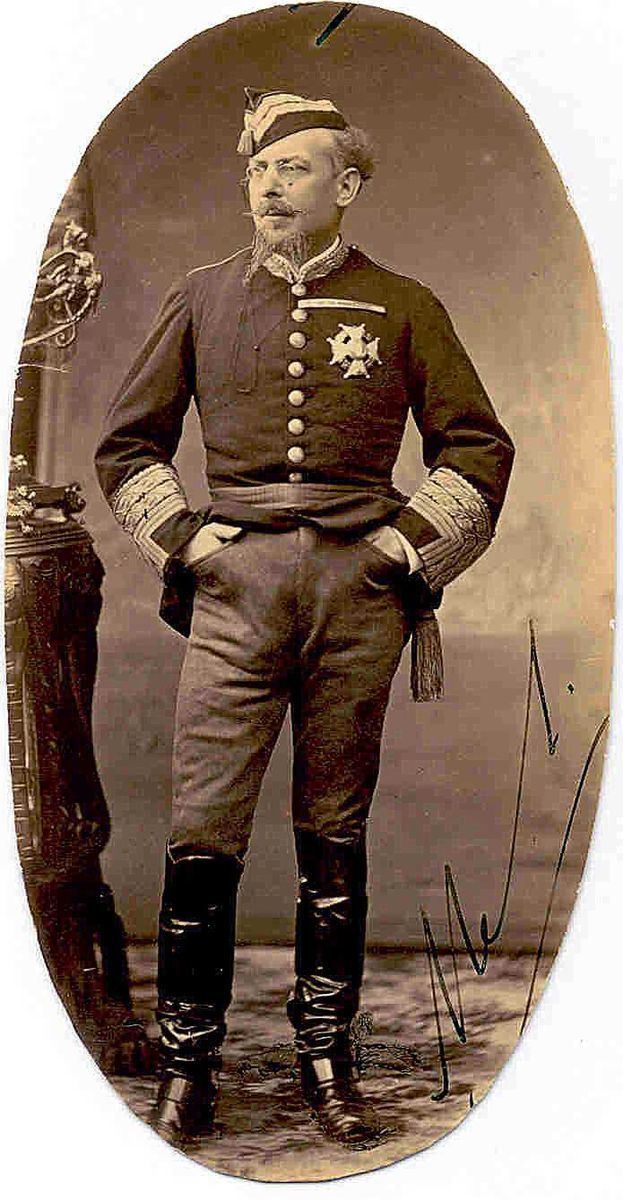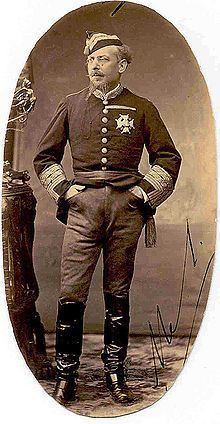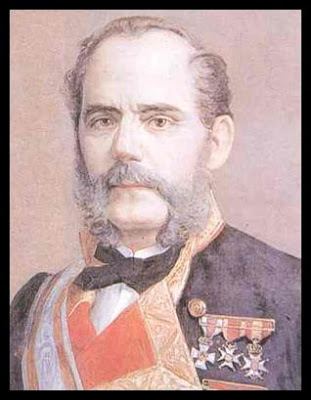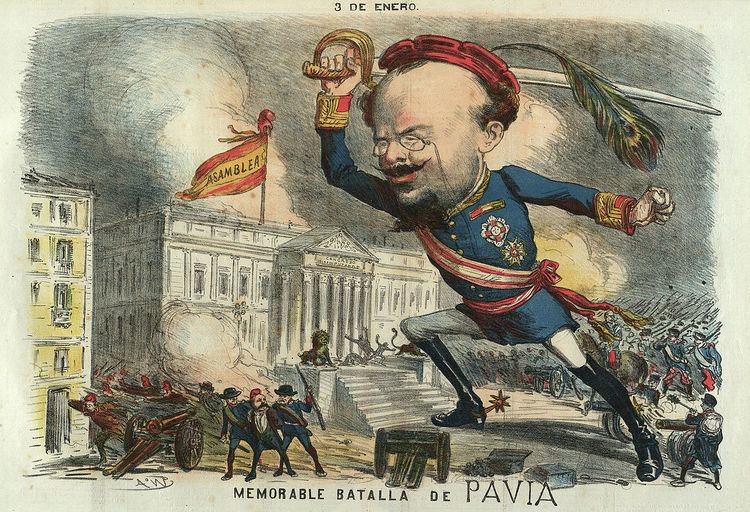Name Manuel y | ||
 | ||
Manuel pav a y rodr guez de alburquerque
Manuel Pavia y Rodriguez de Alburquerque (August 2, 1828 – January 4, 1895) was a Spanish general, born in Cadiz.He was a general that took part in the main events of the Spanish political life during the second half of the XIX century. He participated in the Revolution of 1868, that removed Isabel II out of the power and led the coup d´etat which finished with the First Republic, giving way to the Restoration.
Contents
- Manuel pav a y rodr guez de alburquerque
- Early career
- From the 1868 Revolution to the Restoration
- Death
- References

Early career

His military career started in 1841, when he entered the Royal Artillery College at Segovia with 14 years old. He became a lieutenant in 1846 and a captain in 1855. Pavía returned to Spain after fighting at the Morocco´s war in 1859 and in the European expedition of Mexico in 1862 and in that year he was proclaimed major.

His first important intervention in the Spanish history took place in January 1866, being commander under the order of the general Juan Prim. He participated in an unsuccessful mutiny against the regime of Elizabeth II, ruined in Madrid. Prim leaved the Liberal Union of O´Donnell and entered the new Progressive Party. At the end of that year, Pavía and Prim organised a mutiny with other generals, but this rebellion didn't succeed because of the lack of popular and military support.

O´Donnell sent a detachment to detain the conspirators. Prim and Pavía started an escape to Portugal, persecuted by Zavala and Echagüe. During the escape they received many support from the Spanish population.
From the 1868 Revolution to the Restoration
After two years of exile, Pavía returned to Spain collaborating again with the general Prim, but this time he begun a successful revolutionary movement in August 1866 with the Pact of Ostende with the Democratic Party.

The armed insurrection broke out in Andalucía, prepared by the revolutionary Juntas composed by democrats and progressives, which actuated in favour of a military conspiracy . In September 1868, after proclaiming the manifest “España con honra”, Prim disembarked in Cádiz. The 28th of September he won the battle of Alcolea and the support of Barcelona and the Mediterranean coast was decisive for the victory of the revolution. The queen abandoned the country in September 30 and it was constituted a provisional government under the reign of the general Serrano.

During this period, Pavía fought in Navarra at the beginning of the third Carlist War. In 1873, (with the First Republic proclaimed) with the general Martínez Campos, ruled the repression of the cantonalist insurrection, initiated 12 July of that year during the presidency of Pi y Margall in Cartagena which pretended to constitute a federation of the autonomic territorial organizations of the central power.

Pavía and Martínez Campos took one by one almost all the cantons between July 26 and August 8, being the president Emilio Castelar, only the canton of Cartagena resisted until January 13 of the next year. At the end of 1873, Pavía occupied again the charge of general captain of “Castilla la Nueva”, with the headquarters in Madrid, function that performed when the president Castelar, (during the first days of 1874), asked the “Congreso de los Diputados” for a vote of confidence which was rejected.
The 3rd of January Pavía, (which political posture was favourable to the united centralism) presented himself in the Congress and ordered to evacuate the building at the moment that it would proceed to a new presidential election ruled by a federalist. With the coup d´etat finished, it started like this the named “Fase Pretoriana” of the First Republic, led by Francisco Serrano (Duque de la Torre), which rapidly would give way to the return of the monarchy of the House of Borbón with Alfonso XII, son of Isabel II.
During the Restoration, Pavía was the general captain of Catalonia from 1880 until 1881 and again general captain of “Castilla la Nueva” in 1885, under the regency of María Cristina de Habsburgo-Lorena. In 1886, applying this charge, he defeated in Madrid the popular anti-dynastic Manuel Villacampa.
Death
During his last years of life, was promoted to general captain, was president of the “Consejo Supremo de Guerra y Marina” and wrote different military history stories. Manuel Pavía died the 4th of January 1895.
References
This information has been taken from: A book called “Historia de España Nº13-Revolución y Restauración” from a collection of “El Mundo” newspaper.
